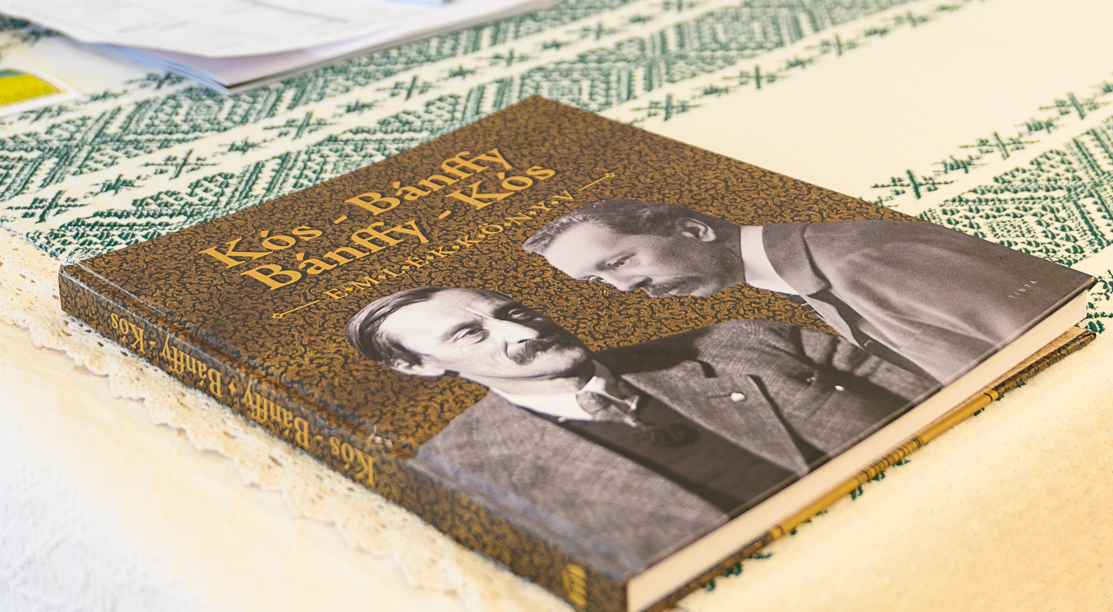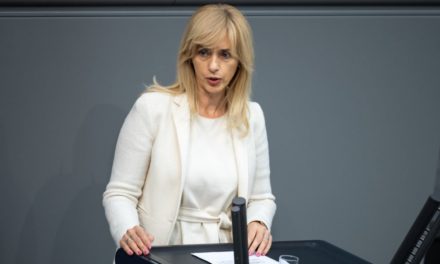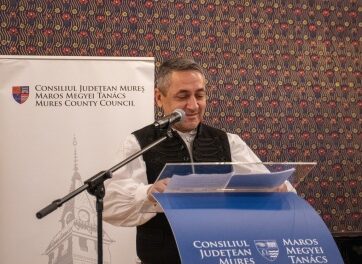The exhibition that opened in Budapest in December and presents the careers of Károly Kós, born 140 years ago, and Count Miklós Bánffy, born 150 years ago, will soon be on display in Transylvania.
The traveling exhibition organized on the occasion of the 150th anniversary of the birth of Count Miklós Bánffy and the 140th anniversary of the birth of Károly Kós will also be available in Sepsiszentgyörgy, Cluj-Napoca, Marosvásárhely, Nagyvárad, Timisoara, and Marosvécs.
The exhibition opened in mid-December with the support of the Ministry of Construction and Transport (ÉKK) in Pesti Vigado, and will arrive in Sepsiszentgyörgy on January 22, the day of Hungarian culture.
Curator Zsuzsanna Szebeni, theater historian, head of the Liszt Institute György Sepsiszent told Krónika that the careers of the two creators have many common features.
"I've been studying both creators for a long time, mostly for the "arts and crafts" creative style, but for many other reasons. By the way, I researched the work of Count Miklós Bánffy more. I dealt with the two tracks as an expert in the documentary trilogy Griff, Dämvad and Varjú," said the curator. The three-part series presents the life and work of Miklós Gróf Bánffy, Károly Kós and János Kemény Báró, i.e. three large-format polymaths.
"I'm still thinking about it now, and I feel a little remorseful for not including the life path of János Kemény, who was born 120 years ago, as a third part of the exhibition. By the way, more people deal with Károly Kós, his oeuvre and career are much more elaborated. They themselves were close friends and held common principled positions despite the many differences between them," said the curator. He added that the double anniversary gave itself and the Ministry of Construction and Transport, more specifically the minister personally, showed interest and receptiveness to the topic.
Zsuzsa Szebeni also explained that although the exhibition opened in Budapest's Vigado, after the presentation there, she would be happy to present it in Transylvania, and if possible - even through other Liszt Institutes - abroad.
According to the plans, the route of the exhibition is: the Székely National Museum in Sepsiszentgyörgy (January 22 - April 21), Bonchida (April 27), then Cluj-Napoca, Marosvásárhely, but the curator wants to present the exhibition in Timisoara and Nagyvár, with the final location in Marosvécs it will be a castle.
The exhibition will include, among other things, the poster of Károly Kós's play Antal Nagy Budai, Kós's awards, cigarette case, deadline diary from 1956, sketchbook, Zsigmond Móricz's last letter to Károly Kós, Miklós Bánffy's letters to Károly Kós, etc.
"If we follow their life paths, common points can be seen: Bánffy and Kós both participated in IV. In organizing the coronation of Charles. Miklós Bánffy played a major role in the establishment of the institute in Istanbul (founded in 1916 to develop relations between Hungarians and Turks - editor's note), and his first scholarship recipient was Károly Kós, both supporters of the Turanian opening. One of the most important points in common in the lives of Bánffy and Kós is that after the Trianon tragedy, their path does not lead to Hungary, but instead of a secure livelihood in Hungary, they choose their homeland, Transylvania," explained Zsuzsa Szebeni.
As he explained, they both tried to establish all those - sometimes very impossible - tasks in public life, where the minority was left without representation, and they tried to perform all cultural functions and tasks as far as possible without state support.
"This is how the institutions of which both are the cornerstones are created: the Transylvanian Fine Arts Guild, the Transylvanian Helikon, and the Transylvanian Színpártoló Társaság. They create the Miklós Barabás Guild as a foundation for the basic activities of the visual artists, and at the same time, in their Reformed custodian activities, they pay special attention to assessing the state of monuments in the church districts and all those sacred objects that represent inestimable ecclesiastical and historical value," explained the theater historian.
Zsuzsa Szebeni added that the series of ecclesiastical monument surveys by László Debreczeni is related to the activities of Bánffy and Kós, but at the same time, they also put a lot of emphasis on the modern, advanced foundations of economy and agriculture, within which they were united by their special attention to horses.
Zsuzsanna Szebeni also explained that the exhibition shows the structure of a special, parallel life path: the common points of the two paths are shown, from the coronation to the Transylvanian trilogy presented at the Vígszínház in 1937, the first play of which is Károly Kós's theatrical "baptism by fire": it was presented then Budai's play Antal Nagy, whose author, set and costume designer are all in one person.
"In addition, the stained glass pictures created for the two exhibitions are very special, one of which shows the window of the Székely National Museum in a reduced form on the Csaba királyfi star trail. The other picture is Attila, the whip of God. Both designs were made by Miklós Bánffy, and the contractor was the same artist: sculptor András Makkai, who in 2014 created the window of the Székely National Museum and the inscription on the Venetian mosaic," explained Zsuzsanna Szebeni. He also explained that significant parts of the exhibition are the blueprints received from the partner institution, the Székely National Museum, which present the elements and original designs that were realized in the last decade by local artists based on the designs of Károly Kós.
"The real sensations of the exhibition are the objects that, thanks to the professional aspects of my co-curator, Katalin Kós, and the joint work, gave the exhibition a real historical and time-traveling atmosphere. I am grateful that these objects could, as it were, "objectify" the personalities of Bánffy and Kós. I find the letters with a direct voice that could have been included in the exhibition to be particularly interesting," the curator listed.
As he said, if it were possible to single out one of the objects on display, he would definitely like to mention the three postcards on which Miklós Bánffy calls Károly Kós "my dear friend".
"But it was a great pleasure to finally find a photo of the Transylvanian Fine Arts Society from the Budapest Book Fair, from 1938, when the wreath of Helikon's old women in art deco-like costumes was fashionably blooming in front of the tents showing the unadulterated world of Transylvania," said the curator. An interesting addition about Károly Kós is that in 1937, a reporter from Budapest called Károly Kós a universal genius, who replied: "Universal genius? I am an omnibus, gentlemen, an omnibus who picks up everyone who asks for it and keeps bumping along with everyone on the road that is only our road!... What do I do, what do I do? It's a difficult question, perhaps the most difficult, but I'll answer it: I do everything! The biggest problem is that there is a lack of supply, we old people are slowly dying and there is no one left behind to continue the work we have undertaken. As long as we live, as long as our strength lasts, everything must be done by us and we will do everything, even the smallest way. We old people have to solve all kinds of cultural problems within the churches..."
As mentioned in the presentation of the exhibition, Károly Kós and Miklós Bánffy started from different places, but they looked at the same thing and headed for the same thing.
Kós described their lifelong friendship as follows: "I'm a democrat and he's an aristocrat." Both of them remained loyal to "the poor mother, in the great trouble of little Transylvania". Zsuzsa Szebeni also emphasized that at the opening in Budapest, the best of Hungarian architecture, President Katalin Novák and Minister János Lázár, honored the exhibition with their presence on the Day of Hungarian Architecture. He also emphasized that they owe special thanks to the János Kemény Foundation of Marosvécs, the Hungarian Academy of Arts, the publisher Tinta, which produced the catalog of the exhibition, the manufacturer Artes és Kobak KFT, and the graphic artist Róbert Szabó Szebeni, for making the exhibition possible in an incredibly demanding design.
Cover image: Double anniversary in one exhibition
Source: Facebook/Liszt Institute, György Sepsiszent












